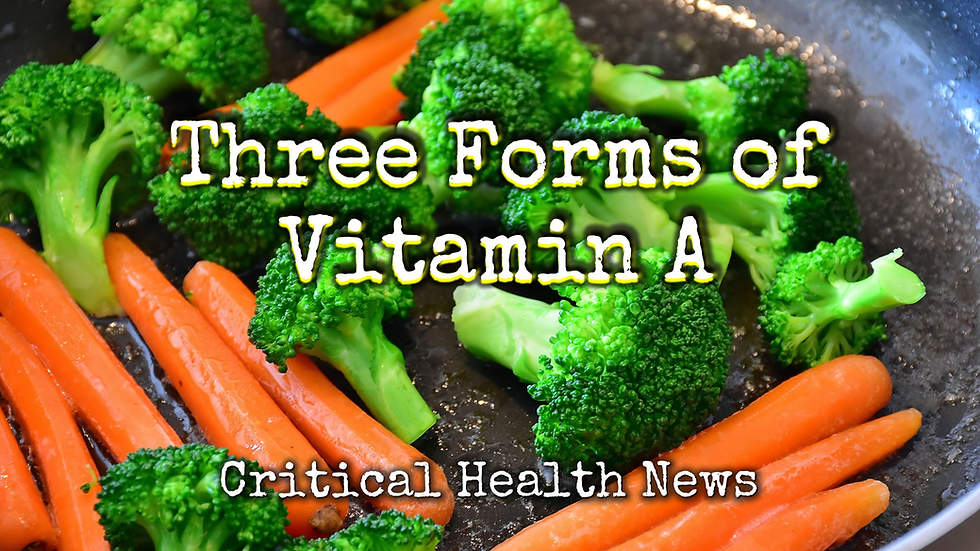The Three Forms of Vitamin A
- Critical Health News
- Apr 13, 2023
- 2 min read
Updated: Sep 9

While many topically applied vitamins have skin benefits, none can come close to the wide ranging salubrious effects provided by Vitamin A, a powerful and multifunctional oily nutrient that is available in three major forms.
The most common and the most stable form of Vitamin A is called retinyl palmitate. Retinyl is the Latin designation for Vitamin A and palmitate represents a carrying case or ferry for Vitamin A, acting to shuttle to the nutrient around in a protective bubble. This is the type that is absorbed into the body from the digestive system when we take supplements or eat Vitamin A containing foods. Topically it has some nice moisturizing and skin softening properties and there are enzymes in the skin that can break it down and activate it.
The second form of Vitamin A is known as retinol. It’s more active than retinyl palmitate and, in fact, if you use a high enough concentration of retinol (say 5 to 10 or even 20 percent) you can get a nice exfoliating Vitamin A skin peel. However retinol is quite unstable and for this reason you’re really not going to find these kinds of concentrations in topical products. At lower concentrations retinol can be “somewhat effective”, although the amount of retinol in most retail products isn’t going to get you much effect.
The third type is the most important; chemists call it retinoic acid. It’s known as active Vitamin A, because in the skin it’s the form that is doing the work. Both retinyl palmitate and retinol have to be converted into retinoic acid to accomplish their Vitamin A effects. In essence when you use retinoic acid, you’re using the real Vitamin A.
Retinoic acid is powerful stuff. That’s why it’s available by prescription only and in minuscule concentrations ranging from 0.01 percent to 0.1 percent. However, even at those seemingly infinitesimal strengths, the topical benefits of retinoic acid are well recognized and impressive, including thicker, stronger skin, diminished hyperpigmentation (dark spots), improvement in photo-damage induced fine lines and wrinkles and prevention and healing of acne blemishes
The knock on retinoic acid is its potential to cause an irritation known as “retinoid dermatitis” (RD). This is especially likely to occur if the skin is already sensitive. If you’ve tried to use retinoic acid, and ended up with RD, try using or upping your daily dose of essential fatty acids. Low levels of Omega 3 and 6 EFAs can increase the possibility of skin reactions. In deficiency states, RD is much more likely to occur.
In my experience, it’s usually people who have some kind of issue with fat malabsorbtion or who aren’t supplementing with EFAs, who have the most problems with retinoic acid sensitivities. What I’ve noticed is with correcting fat malabsorbtion or even simply getting on the Ultimate EFAs or bumping up your dose, you can dramatically reduce or eliminate irritation reactions.




















Comments